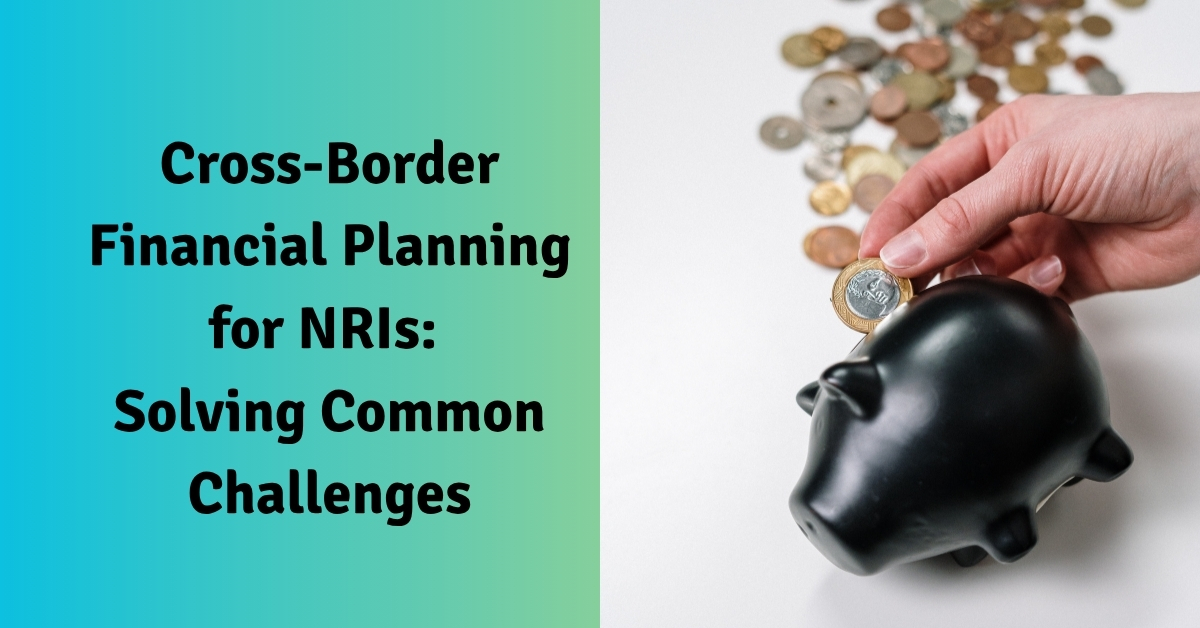Cross-Border Financial Planning for NRIs: Solving Common Challenges

Cross-border management of funds presents special challenges to Non-Resident Indians (NRIs). From tax returns to repatriation of funds, or managing retirement savings, the right procedures are essential to avoid a lot of money and stress. Let us talk about some of the issues that are on the mind of NRIs on a daily basis and how they can be addressed.
Significance of Form 10F for Availing DTAA Benefits
The majority of NRIs are entitled to relief from double taxation under the Double Taxation Avoidance Agreement (DTAA) so that they are not taxed twice on the same income. Notification of claim in the return of income is no longer adequate. Submission of Form 10F online becomes obligatory to be treated as a foreign tax resident.
Form 10F gives essential information such as citizenship, foreign address, and tax residency. Failure to provide this will lead to rejection even of valid DTAA claims by the Indian revenue authorities. Electronic filing of Form 10F on the income-tax portal, with the uploading of a valid Tax Residency Certificate provided by the foreign nation, has been made to facilitate processing and reduce litigation.
Overstepping this little but important step usually invites warning from the Indian tax department, resulting in unwarranted complexities and delays.
Requirement for NRO Fund Transfers
When NRIs get money in their NRO (Non-Resident Ordinary) accounts as income or gift, remitting such money abroad is strictly regulated. Indian banks ask for a certificate of Chartered Accountant (Form 15CB) to confirm that taxes, if any, have been paid and the remittance is according to FEMA (Foreign Exchange Management Act) regulations.
Even if the money is a gift from a relative, banks cannot presume the source and character of funds. Getting Form 15CB and then filing Form 15CA online serves as the necessary proof for hassle-free repatriation. This measure saves both the person and the bank from future inquiry by tax authorities.
Omission of this process can lead to delay, regulatory questioning, and even rejection of the transfer application.
Planning Canada to India Retirement Fund Transfers
Return to India after years abroad is exciting, but with prudent financial planning. Money transfer to India for NRIs with Canadian RRSPs entails prudent planning.
There is no rollover option directly from a Canadian RRSP to Indian retirement funds. RRSP withdrawals are tax withheld within Canada, and would be 25% for a non-resident, although that falls to 15% under the terms of the India-Canada DTAA.
Whether to withdraw funds prior to or subsequent to emigrating overseas depends on personal investment objectives, tax rates, and currency factors. To leave RRSPs in Canada initially and follow a plan of gradual withdrawal is usually most tax-effective, with the added benefit of avoiding currency risk and surprise taxes.
Common Pitfalls in Cross-Border Tax Compliance
One of the biggest errors of NRIs is not submitting online forms compulsorily while claiming tax relief. Increasing digitization of India’s tax process implies shortcuts adopted earlier are no longer valid. Compliance procedures today include active online filings, genuine certificates, and proper self-reporting.
Another frequent error is misreading the documentation needs to transfer money from NRO accounts. Blind compliance with bank guidance or unofficial advice usually leads to rejection or regulatory issues later.
The realization that minor oversight in compliance may become financial aggravations motivates cautious advance consultation with professional experts.
Long-Term Benefits From Careful Planning
Successful cross-border financial planning is beyond money transfer and tax return filings. It calls for intelligent thinking, keeping oneself updated with a change in the rules, and consulting professionals well-versed with NRI finances.
Precautions such as filing Form 10F, obtaining the right certificates, and planning withdrawals with care can go a long way in improving finances. Awareness, compliance, and prudent decision-making are a firm foundation for hassle-free financial dealings.
Conclusion
Overseas funding can look intimidating initially, but knowledge and prompt action make sure that NRIs derive the maximum from their finances while being completely compliant. From availing DTAA benefits to sending money or protecting retirement funds, attention to detail is what makes the difference. Being aware and a step ahead makes sure that dreams stay firmly in reach, regardless of where the world takes a person.
FAQs
1. What is Form 10F and why is it important for NRIs?
Ans- Form 10F is a declaration that provides proof of foreign tax residency, essential for claiming DTAA benefits while filing Indian tax returns.
2. Can Form 10F be submitted physically to the tax department?
Ans- No, Form 10F must be submitted electronically through the Indian income tax portal before filing the tax return.
3. What documents are needed along with Form 10F?
Ans- A valid Tax Residency Certificate (TRC) from the country of residence should be uploaded along with Form 10F.
4. Why does a bank insist on a CA certificate for NRO to foreign transfers?
Ans- Banks require a CA-issued Form 15CB to ensure that all tax obligations on the funds being remitted have been met.
5. Is there a limit on how much money can be transferred from an NRO account abroad?
Ans- Yes, currently up to USD 1 million per financial year can be repatriated after fulfilling documentation requirements.
6. Can gifted funds also require a CA certificate for transfer?
Ans- Yes, even if the funds are gifted, a CA certificate is required to confirm compliance with tax and FEMA regulations.
7. What happens if Form 10F is not filed before claiming DTAA benefits?
Ans- The DTAA claim may be rejected, and additional taxes may be levied, along with possible penalties.
8. Can RRSP funds be directly transferred to Indian retirement accounts?
Ans- No, there is no direct transfer mechanism. Withdrawals must be planned while considering tax implications in both countries.
9. Is Canadian withholding tax applicable after becoming an Indian resident?
Ans- Yes, even after relocating to India, Canadian withholding tax applies on RRSP withdrawals, although DTAA can offer relief.
10. What is the best way to manage RRSP funds after returning to India?
Ans- Keeping the RRSP in Canada and adopting a systematic withdrawal strategy, while leveraging DTAA benefits, often proves most tax-efficient.
Disclaimer: The information provided here is for educational and informational purposes only and should not be construed as financial, legal, or tax advice. Consult with a qualified professional before making any investment decisions. We do not accept any liability for errors or omissions in this information nor any direct, indirect, or consequential losses arising from its use.



